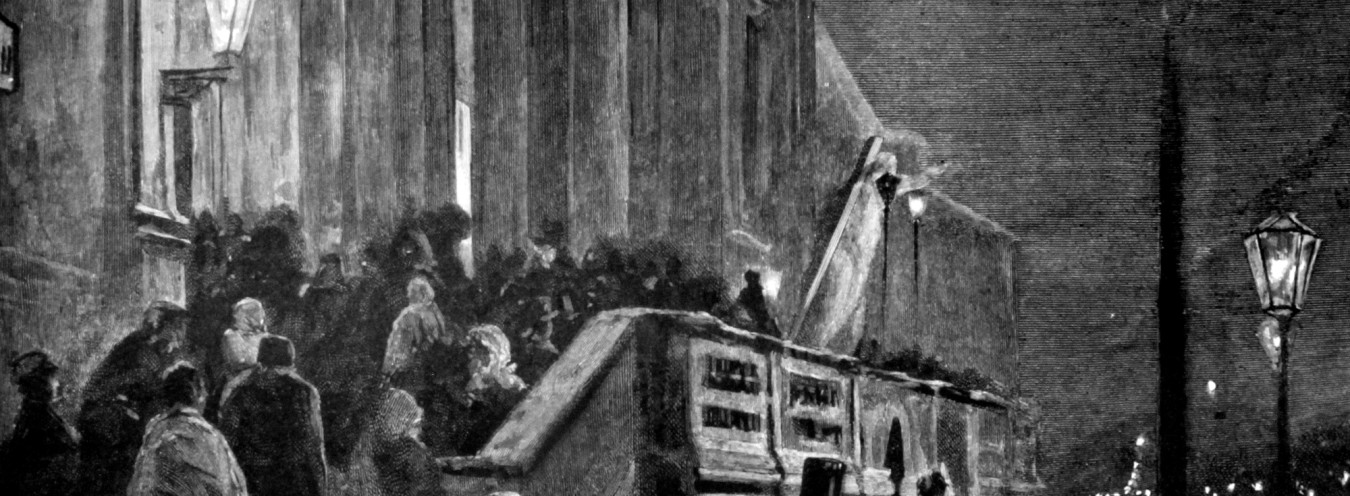
Street Lamps
It had grown quite dark; the lamps had been lit in the street, and their light outlined the window frame and folds of the curtain upon the ceiling of Izabela’s boudoir. (54)
In December 1856, 82 gas lamps were erected in a row stretching from the gasworks on Ludna, via Książęca, Nowy Świat, and Krakowskie Przedmieście, all the way to Castle Square. The press widely reported the event; for example, Kurier Warszawski wrote that thousands of people […] thronged to Krakowskie Przedmieście and Nowy Świat, to watch Warsaw illuminated by gas for the first time. This novelty caused much wonder; the people employed to light the gas lamps were followed by many others, who would raise their eyes in curiosity to admire the gas being lit at each new lamp. At the turn of the century, there were almost two thousand gas lamps. They also began to appear in the less central parts of the capital: on Czerniakowska, Ogrodowa, Pawia, as well as on the eastern bank of the Vistula. Despite that, the general public and the journalists complained that the city was not adequately lit. In 1883, double-jet burners were first used, although initially their use was limited to the city’s main streets. The Kierbedź Bridge was illuminated by gas lamps. Oil and kerosene lamps still functioned on the outskirts of Warsaw, and their wooden poles were painted in white-and-red stripes before the January Rising.
The first experiment involving electric illumination took place in Warsaw as early as in 1865, as recorded in a report from that time: photographs were taken in Warsaw of a bridge over the Vistula during works undertaken at night by electric lighting. Although the progress in this area was relatively fast, electric lighting was more frequently used for industrial purposes, as its use on the streets continued to cause a sensation and fears of fires.
The Doll mentions lighting frequently: the Mincel store was illuminated throughout the winter by a huge lamp with a shade, plenty of gas lamps were used in Wokulski’s store, gas lanterns were lit outside on the streets, the church – during the Easter charity fundraising – was plunged in gloom, which could not be dispersed by the glow of several hundred tapers in silver candelabra, and Julian Ochocki was the inventor of the electric lamp.
Bibliografia
- J. Galewski, Warszawa zapamiętana, ostatnie lata XIX stulecia, Warszawa 1961.
- B. Wierzbicka, Zmiany wnętrza Krakowskiego Przedmieścia około 1900 roku, w: Wnętrze warszawskiej ulicy, red. taż, Warszawa 2002.
- J. Zieliński, Latarnie warszawskie. Historia i technika, Warszawa 2007.



